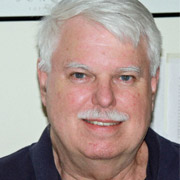
Mexico is dealing with the fallout of a powerful 7.6 magnitude earthquake that occurred near the Pacific coast on the anniversary of two previous tremors. Earthquakes occurred on Sept. 19 in both 1985 and 2017 in Mexico, killing thousands of people.
Florida State University Professor of Geology James Tull is available to speak with reporters about the effects of the earthquake and the geology behind this catastrophic event.
James Tull, professor, Department of Earth, Ocean and Atmospheric Science
(850) 644-1448; jtull@fsu.edu
Tull is an expert in structural geology, global tectonics and fault systems. He received his doctoral degree from Rice University and has taught at Florida State since 1981.
“The 7.6 magnitude earthquake that occurred today in the Colima-Michoacan border region, Mexico just a few miles on shore is the result of the continued collision between two of Earth’s large tectonic plates, the Cocos oceanic plate in the eastern Pacific Ocean and the North America plate. This collision zone is called a subduction zone, and in this case the Cocos oceanic plate is being shoved beneath the North America plate of which Mexico is a part. The subduction zone is a large fault zone inclined beneath Mexico at an angle of about 15°, starting in a deep northwest-trending offshore oceanic trench. Where the fault zone slipped today was at a depth of about 9 miles. Interestingly, today’s earthquake was on the same exact day when major earthquakes struck Mexico in 1985 and 2017.
“Shockwaves from today’s earthquake passed through the rocks beneath Tallahassee and were recorded by the EOAS seismometer beneath the EOAS building on campus only 4 minutes after the earthquake occurred.”




